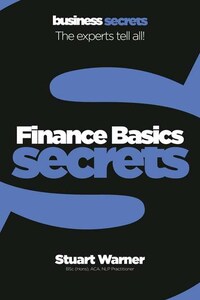Many business people, professionals and senior executives who may be experts in their field are sometimes less confident in finance. Quite often this is unfounded and can easily be overcome. In the business world the ability to understand finance and communicate financially is essential.
To date, Iâve spent almost two decades working in finance. Iâve spent a large proportion of this time teaching others. Early on, I found that learning finance was akin to learning a language. One of my own finance teachers told me, âItâs not the numbers, itâs the English youâll find hard!â â and my own experience proves that this is certainly true. Accountants will often use several names for the same thing. Where possible Iâve tried to give alternative explanations when introducing a financial term. The Jargon Buster at the back of the book should also help you get to grips with some key financial terminology.
In this book Iâve picked 50 secrets that will help you get to grips with finance basics. Iâve divided the secrets into seven chapters which cover seven crucial areas every business person should understand.
Introducing business finance. Business owners, managers and employees need to have a basic level of financial awareness to help a business succeed.
Accounting fundamentals. Make sure you know basic financial terminology and concepts. Be familiar with the main financial statements produced by a business.
Making profit. Profit is the raison dâêtre for most businesses. Knowing how to make and increase profit is one of the key ingredients for business success.
Managing cash. âProfit is sanity but cash is reality.â Without cash a business cannot survive for long. Effective cash management will help a business to endure.
Budgeting. Many businessess invest considerable time in budgeting but few do it successfully. Some practical tips can improve the process.
Evaluating business opportunities. Businesses should use established techniques to help decide whether or not to commit time, resources and money on investment opportunities.
Measuring business performance. A successful business can be judged by the size of its market value. Its performance can be measured by using financial ratios.
From students who are interested in business finance to chief executives who want to know more, this book can help you get to grips with finance basics. Youâll even find it interesting and it can help you with your future business activities.
Financial knowledge is not just for accountants â itâs for everyone!
Owners, managers and employees need to be aware of the financial consequences of running their business. In this chapter Iâll explain the different types of business entities. I will show you where a business gets its money from and what it does with it. Youâll appreciate the need to record, analyse and summarize business transactions. Iâll also explain the essential difference between financial accountants and management accountants.








